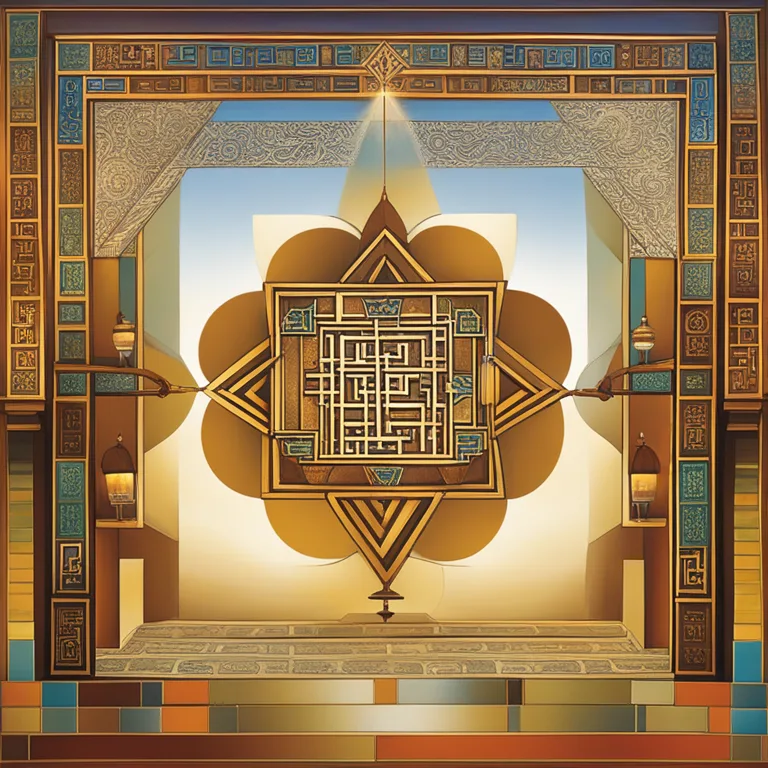
Jewish Meditation Practices Revealed
Delve into the ancient, contemplative world of Jewish meditation, gaining insights into practices that cultivate spirituality and self-awareness.
article by Hina Kurosawa
An Ancient Practice Redefined
Jewish meditation might not be as well-known in the mainstream as its Eastern counterparts, yet it represents a complex and deeply rooted aspect of Jewish mysticism and spirituality. Historically, it stretches back to the biblical patriarchs, who were said to have practiced hitbodedut (self-seclusion) as a form of communicating with the Divine. In modern times, meditation has been adapted to contemporary life, maintaining its ancient foundation while integrating new understanding and methodologies. From the Kabbalistic tradition to Hasidic teachings, Jewish meditation encompasses a variety of techniques, each with a unique flavor and spiritual goal.

Hitbodedut: Personal Communion
Among the most personalized forms of Jewish meditation is hitbodedut, championed by Rabbi Nachman of Breslov in the 18th century. This practice involves secluded, spontaneous, and intimate conversation with God. It can be practiced anywhere, from a room to a forest, and at any time, offering flexibility to practitioners. The goal is to establish a personal connection with the Creator, opening the heart and sharing one's deepest thoughts, worries, and hopes in a candid dialogue.

Visualization and the Sefirot
Visualization is another central technique in Jewish meditation. Kabbalistic meditators often visualize the Sefirot—the ten attributes through which the Ein Sof (Infinite) reveals itself and continually creates both the physical and spiritual realms. Practitioners might focus on specific Sefirot to draw down certain energies or attributes into their lives. For example, meditating on Tiferet, which represents beauty and harmony, could be aimed at bringing balance and compassion into one's personal experiences.

The Sacred Letters and Words
The Hebrew alphabet holds profound spiritual significance within Jewish thought. Certain meditation practices involve focusing on Hebrew letters or words, attributing to them divine representational meanings. This technique is said to parallel creation, as Kabbalistic thought considers the Torah to be a blueprint of the universe, written with letters and words that signify more than mere language—they are the condensation of divine energy.

Mantra Meditation: The Power of Names
Echoing the practices of other traditions, Jewish meditation sometimes involves the repetition of certain names of God or phrases from liturgy. These mantras are believed to facilitate concentration and a deeper connection to the spiritual realm. The continual repetition helps the practitioner move past the distractions of the mind, reaching a state of greater mindfulness and presence.
Contemplative Prayer: A Dual Approach
Meditation is often interwoven with prayer in Jewish tradition, adding a deeper dimension to daily religious observances. The Shema, Amidah, and other foundational prayers serve as focal points for meditation. The dual nature of this practice involves both the outward recitation and the inward contemplation, offering a holistic approach that engages the body, voice, mind, and spirit.
Modern Applications and Adaptations
Contemporary practitioners of Jewish meditation often blend ancient techniques with present-day mindfulness practices. This fusion creates an accessible entry point for individuals seeking spiritual growth within a Jewish framework. Today, Jewish meditation is not only a tool for individual transformation but also a community-building activity with workshops, retreats, and regular group meditations bringing people together to share and deepen their practice.
Published: 12/20/2023
Modified: 12/20/2023
More predictions
Come back here soon to learn more about yourself and your future


Korean Meditation Practices for Serenity
Discover the transformative power of traditional Korean meditation techniques and enhance your mental tranquility.


Boost Concentration with Meditation Techniques
Discover effective meditation strategies to enhance focus and concentration in daily life.


Meditation Techniques for Anxiety
Discover effective meditation practices to manage and reduce anxiety, promoting mental clarity and inner peace.